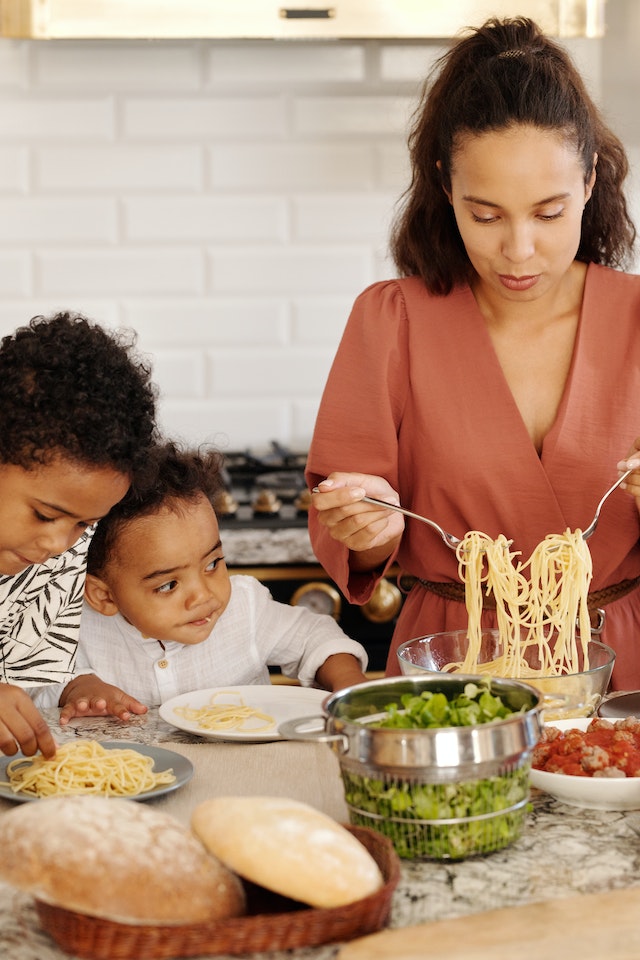
Meal planning is key to good health.
It’s been said that “you are what you eat,” and that statement couldn’t be more true when it comes to your health. What you put into your body can have a huge impact on how you look and feel, both physically and mentally. That’s why meal planning is so important. With the right plan in place, you can ensure that you’re fueling your body with the nutrients it needs to thrive.
But meal planning goes beyond just choosing the right foods to eat. It’s about creating a strategy that works for your lifestyle, while also taking into account your personal preferences and dietary needs. Some people like to plan out their meals for the week ahead of time, while others prefer to make decisions on a daily basis. Whatever approach you choose, the key is to be consistent and intentional in your choices.
One of the biggest benefits of meal planning is that it can help you save time and money. By shopping for ingredients in bulk and cooking meals in advance, you can avoid the last-minute rush to find something to eat, which often leads to unhealthy choices like fast food or convenience snacks. Instead, you can have healthy, delicious meals ready to go whenever hunger strikes.
Another advantage of meal planning is that it can help you avoid food waste. By planning your meals in advance, you can use ingredients more efficiently, and be sure to use up any perishable items before they go bad. This not only saves money, but it’s also better for the environment.
So if you’re looking to improve your health, consider meal planning as a tool to help you make better food choices. With a little bit of planning and preparation, you can set yourself up for success, and enjoy the benefits of a healthier, happier life.
What IS meal planning?
Meal planning involves creating a strategy for choosing healthy foods that work for your lifestyle and meet your personal preferences and dietary needs. It can save you time and money, help you avoid unhealthy food choices, and eliminate food waste. By being consistent and intentional in your choices, you can fuel your body with the nutrients it needs to thrive and enjoy the benefits of a healthier, happier life.

Do I have to pre-prepare all my foods to do meal planning?
You don’t necessarily have to pre-prepare all your meals to do meal planning, although doing meal prep can certainly help. Meal planning can be as simple as choosing what meals you want to have for the week and making sure you have the ingredients on hand. From there, you can decide if you want to pre-prepare any meals in advance, or if you prefer to cook them as you go. The key is to have a plan in place, so that you know what your meals will be ahead of time and can avoid last-minute decisions that may not be as healthy.
Getting Started with Meal Planning
Meal planning is a fantastic way to take control of your nutrition and streamline your life. By creating a plan for your meals, you can save time, money, and ensure that you are nourishing your body with wholesome food choices. In this section, we will delve into the step-by-step process of getting started with meal planning. From setting goals to organizing your kitchen, we will cover everything you need to know to embark on a successful meal planning journey.
Assessing dietary goals and preferences
The first step in getting started with meal planning is to assess your dietary goals and preferences. Think about what you want to achieve with your meals. Are you looking to lose weight, gain muscle, or simply maintain a balanced diet? Consider any dietary restrictions or preferences you may have, such as following a vegetarian or gluten-free diet. Understanding your goals and preferences will help you tailor your meal planning to best meet your needs.
Setting realistic meal planning goals
Once you’ve assessed your dietary goals and preferences, it’s time to set realistic meal planning goals. These goals will serve as a guide when creating your meal plan. Start by determining how many meals you want to plan for each day. Some people prefer to plan all three main meals (breakfast, lunch, and dinner), while others may only plan for dinners, relying on leftovers or easy breakfast and lunch options.
Consider the amount of time you have available for meal preparation and cooking. If you have a busy schedule, you may want to focus on recipes that are quick and easy to prepare. On the other hand, if you enjoy spending time in the kitchen and have more free time, you can explore more elaborate recipes and cooking techniques.
Another important aspect of setting realistic meal planning goals is considering your budget. Determine how much you are willing to spend on groceries each week and plan your meals accordingly. Look for cost-effective ingredients and try to find ways to repurpose leftovers to maximize the value of your groceries.
Organizing your kitchen
Now that you have assessed your goals and preferences and set realistic meal planning goals, it’s time to organize your kitchen. A well-organized kitchen will make meal planning and preparation much easier. Here are some tips to help you get started:
Clean out your pantry and refrigerator: Take inventory of what you have on hand and organize your ingredients. Discard any expired or unused items. This will give you a clear idea of what you need to buy and prevent food waste.
Stock up on staple ingredients: Make a list of staple ingredients that you can use in a variety of recipes. This may include items like whole grains, canned beans, spices, oils, and condiments. Having these staples on hand will make it easier to whip up meals with minimal effort.

Create a meal planning calendar: Choose a method that works best for you to create your meal planning calendar. This could be a physical calendar, a digital app, or a simple notepad. Outline which meals you plan to have each day. Consider factors like variety, nutrition, and seasonality when choosing recipes.
Plan for leftovers: Don’t forget to plan for leftovers! Designate specific meals to include leftovers, which can save you time and money. Batch cooking and freezing leftovers can also be helpful for days when you’re short on time or energy.
Make a grocery list: Based on your meal plan, create a detailed grocery list. Group items by category (produce, protein, pantry staples, etc.) and stick to it when you go shopping. This will help you avoid unnecessary purchases and stay focused on healthy choices.
Prep in advance: If time permits, consider doing some meal prep in advance. This can include chopping vegetables, pre-cooking grains or proteins, and portioning out ingredients for recipes. This will save you valuable time during the week and make meal preparation a breeze.
Building a Meal Plan
When it comes to meal planning, having a structured template can make the process much more organized and efficient. Start by dividing your template into seven sections, one for each day of the week. Within each section, break it down further into meal categories such as breakfast, lunch, dinner, and snacks. This will provide a clear visual of your meals for the week. If you have specific dietary requirements, you can also include columns for tracking nutritional information.
A well-crafted meal plan goes beyond just selecting recipes and creating a shopping list. To get the most out of your meal plan, consider the following tips:
Prep ingredients in advance: Take some time during the week to wash, chop, and pre-portion ingredients. This can include slicing vegetables, marinating meats, or cooking grains in advance. By prepping ingredients ahead of time, you’ll save valuable minutes during the hectic weekdays.
Mix and match recipes: Don’t be afraid to mix and match recipes throughout the week to use up ingredients and create new meals. For example, if you have leftover roasted chicken from one recipe, incorporate it into a salad or wrap for lunch the next day.
Embrace leftovers: Leftovers are a meal planner’s best friend. Designate specific meals in your plan as leftovers, allowing for easy and convenient meals when you’re short on time. You can also freeze leftovers for future use or repurpose them into new dishes.
Be flexible: Although a meal plan provides structure, it’s essential to remain flexible. Life happens, and unexpected events or changing moods may alter your appetite or plans. Adapt your meal plan accordingly and listen to your body’s needs.

Get creative: Meal planning doesn’t mean you’re confined to rigid constraints. Use your creative spirit to add your personal touch to the recipes. Experiment with different seasonings, sauces, and herbs to elevate the flavors and make each meal your own.
Troubleshooting Common Challenges
Meal planning can sometimes come with its fair share of challenges. Here are some common issues that may arise during the meal planning process, along with tips on how to overcome them:
Lack of time: Many people struggle with finding the time to plan and prepare meals. To overcome this challenge, try batch cooking on weekends or days off. Prepare large quantities of food and portion them out for the week ahead. You can also consider using meal delivery services or pre-prepared meal kits that take the guesswork out of planning and save time.
Limited cooking skills: If you’re not confident in the kitchen, meal planning can seem daunting. Start by choosing simple recipes that require minimal ingredients and preparation. Gradually build your cooking skills by trying new recipes and experimenting with different flavors. There are also plenty of online resources, cooking classes, and YouTube tutorials available to help you learn new techniques.

Picky eaters: Meal planning can be challenging if you have family members or household members with different preferences or dietary restrictions. In such cases, involve everyone in the planning process. Have a family meeting to discuss everyone’s likes, dislikes, and dietary needs. Make compromises and find common ground by including a variety of options that cater to different preferences.
Food waste: One of the goals of meal planning is to reduce food waste, but it can still happen. To minimize waste, plan your meals around ingredients that can be used in multiple dishes. Get creative and find ways to repurpose leftovers into entirely new meals. Additionally, consider freezing leftovers or donating excess food to reduce waste.
Lack of inspiration: It’s natural to feel uninspired or bored with your meal plan from time to time. To combat this, try exploring new recipes or cuisines to add variety to your meals. Use cookbooks, cooking blogs, or recipe apps for inspiration. You can also create theme nights, such as Taco Tuesdays or Meatless Mondays, to infuse excitement into your meal plan.
Unforeseen schedule changes: Life can be unpredictable, and unexpected events or schedule changes may throw off your meal plan. The key is to be flexible and adaptable. If a particular meal doesn’t work for a specific day, switch it with another planned meal or use ingredients from that dish to create something different. Having a backup plan or quick and easy recipes on hand can also help in such situations.
Budget constraints: Meal planning can help save money, but sticking to a budget can still be a challenge. To make the most of your budget, focus on seasonal produce, shop sales and discounts, and buy in bulk when possible. Consider incorporating cost-effective ingredients like beans, lentils, and grains into your meal rotation. Additionally, limit eating out or indulging in expensive convenience foods.
Remember, meal planning is a journey, and it’s normal to encounter challenges along the way. By staying positive, being flexible, and continuously seeking new strategies, you can overcome these hurdles and create a meal plan that works for you and your loved ones.
